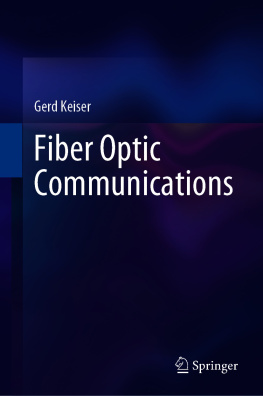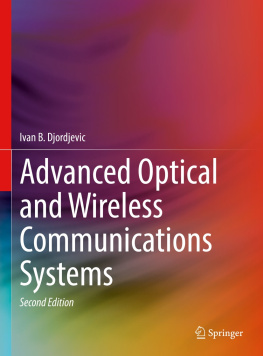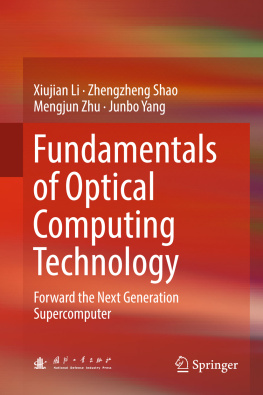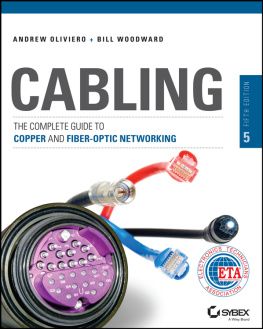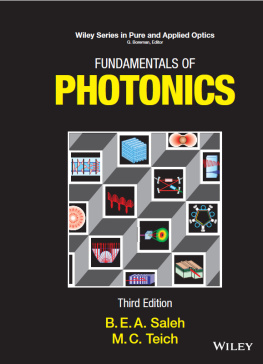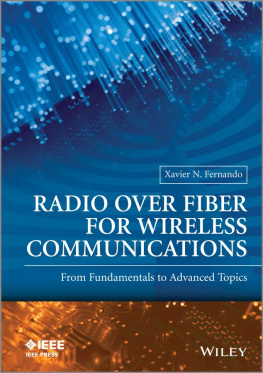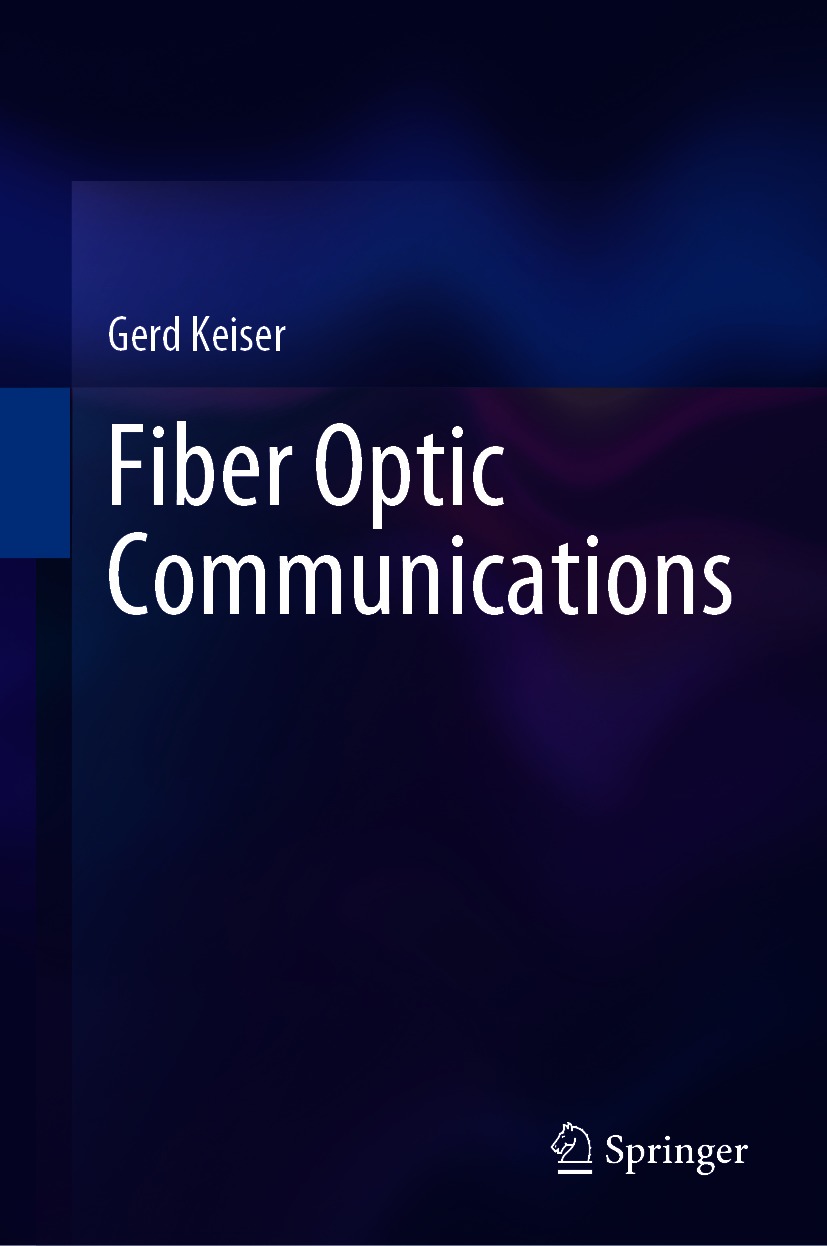Gerd Keiser
Newton Center, MA, USA
ISBN 978-981-33-4664-2 e-ISBN 978-981-33-4665-9
https://doi.org/10.1007/978-981-33-4665-9
The Editor(s) (if applicable) and The Author(s), under exclusive license to Springer Nature Singapore Pte Ltd. 2021
This work is subject to copyright. All rights are solely and exclusively licensed by the Publisher, whether the whole or part of the material is concerned, specifically the rights of translation, reprinting, reuse of illustrations, recitation, broadcasting, reproduction on microfilms or in any other physical way, and transmission or information storage and retrieval, electronic adaptation, computer software, or by similar or dissimilar methodology now known or hereafter developed.
The use of general descriptive names, registered names, trademarks, service marks, etc. in this publication does not imply, even in the absence of a specific statement, that such names are exempt from the relevant protective laws and regulations and therefore free for general use.
The publisher, the authors and the editors are safe to assume that the advice and information in this book are believed to be true and accurate at the date of publication. Neither the publisher nor the authors or the editors give a warranty, expressed or implied, with respect to the material contained herein or for any errors or omissions that may have been made. The publisher remains neutral with regard to jurisdictional claims in published maps and institutional affiliations.
This Springer imprint is published by the registered company Springer Nature Singapore Pte Ltd.
The registered company address is: 152 Beach Road, #21-01/04 Gateway East, Singapore 189721, Singapore
Preface
The discipline of optical fiber communications has undergone a fascinating journey in the past several decades and is still growing rapidly worldwide. Especially exciting during this time was the 2009 Nobel Prize in Physics received by Sir Charles Kuen Kao for his pioneering insight, in the 1960s, into using glass fibers as a data transmission medium and for his enthusiastic international promotions in the further development of low-loss fibers. As a result of the promotions by Kao, the first ultrapure fiber was fabricated in 1970, only four years after his prediction. Modern sophisticated telecom networks based on optical fiber technology now have become an integral and indispensable part of society. Applications include services such as database queries, home shopping, interactive video, remote education, telemedicine and e-health, high-resolution editing of home videos, blogging, and large-scale high-capacity e-science and grid computing. Due to the importance of these networks to modern life, the communication services are expected to always be available and to function properly. Such stringent demands require careful engineering in all technological aspects ranging from component development through system design and installation to network operation and maintenance.
To master the skills needed to work in the optical fiber communications discipline, this book presents the fundamental principles for understanding and applying a wide range of optical fiber technologies to modern communication networks. The sequence of topics takes the reader systematically from the underlying principles of photonic components and optical fibers through descriptions of the architectures and performance characteristics of complex optical networks to essential measurement and test procedures required during network installation, operation, and maintenance. By mastering these fundamental topics, the reader will be prepared not only to contribute to disciplines such as current device, communication link, or equipment designs, but also to understand quickly any further technology developments for future enhanced networks.
To accomplish these objectives, the sequence of chapters addresses the following topics:
Chapter gives the motivations and advantages for using optical fibers, the spectral bands of interest, methods used to boost the transmission capacity of an optical fiber, and what standards are being applied.
Despite its apparent simplicity, an optical fiber is one of the most important elements in a fiber link. Chapter gives details on the physical structures, constituent materials, and lightwave propagation mechanisms of optical fibers.
Chapter gives details on the attenuation behavior and signal dispersion characteristics of the wide variety of common optical fibers. In addition, the chapter discusses international standards for manufacturing optical fibers.
Chapter addresses the structures, light-emitting principles, operating characteristics of light sources, and optical signal modulation techniques.
How to couple the light source to a fiber is described in Chap. , as well as how to join two fibers in order to ensure a low optical power loss at the joints.
Chapter covers the structures and performances of photodetectors. Because an optical signal generally is weakened and distorted at the end of link, the photodetector must possess a high sensitivity, have a fast response time, and add minimum noise effects to the system. In addition, its size must be compatible with that of the fiber output.
The lightwave receiver detects an arriving optical signal and converts it into an electrical signal for information processing. Chapter describes receiver principles and functions, which include signal detection statistics and eye diagram error measurements schemes.
Chapter discusses digital link design methods including power budgets and bandwidth limitations. In addition, the topics include power penalties, basic coherent detection schemes, and details of error control methods for digital signals.
Chapter examines the concepts of analog links for sending radio frequency (RF) signals at microwave frequencies over optical fibers. An expanding application of these techniques is for broadband radio-over-fiber networks.
Chapter addresses wavelength division multiplexing (WDM), examines the functions of a generic WDM link, and discusses international standards for different WDM schemes. It also includes descriptions of passive WDM devices, such as fiber Bragg gratings, thin-film filters, and various types of gratings.
Chapter describes the concepts for creating optical amplification and the applications of these devices. Among the topics are semiconductor optical amplifiers, doped fiber amplifiers, and Raman amplification schemes.
Chapter is devoted to the origins and effects of nonlinear processes in optical fibers. Some of these nonlinear effects degrade system performance and need to be controlled, whereas others can have beneficial uses.
Chapter is devoted to optical networking concepts for long distance, metro, data center, and access networks. Among the topics are optical add/drop multiplexing and optical cross-connects, wavelength routing, optical packet switching, optical burst switching, and passive optical networks.

